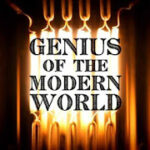As a technology enthusiast, there was no escaping this book. I refer to technology rather than a company because I have never been an ardent Apple or Google fan, having only recently switched from Android to iOS. At the same, it wasn’t a case of eagerness to read the book as it was the fact that I was bombarded with references to the book wherever I went, be it on podcasts or tech sites. Hence, I was able to put the book further down my reading list until I finally came across it a few days back.
Going by the book’s name and the timing of its release, it would be valid to presume that it has the blessings of Apple and would offer candid insights from the who’s who of the iPhone team. However, as the book makes it clear upfront, Apple’s veil of secrecy extends to the extent that no current (and some former) employee can share their story on the record. Hence, the book instead relies on the recounting by other industry stalwarts as well as anonymous Apple sources. This kind of anonymity can impact the credibility of some of the stories but in this case, it can’t be helped and it certainly seems to fit the narrative. The other aspect is that one may be beguiled in to thinking that the book would only be focussed on the immediate story of the device’s inception, however that is thankfully left to the eponymous last chapter of the book. As a result, the book is able to tell a much more holistic story than would have been possible if it had been focussed on the device alone.
As soon as you start reading the book, it becomes evident that the author is extending a thread from Steve Jobs’ biography with his allusion to the “lone inventor” and the author admits to as much. While being repetitive, it is essential to do so because one must see past the mist of Steve Jobs to understand the significantly substantial efforts put in by thousands of others. In fact, the hard headedness of Steve meant that others had to put in far more onerous efforts to help him see the light of the day, only for him to take all the credit. At the same time, Steve paved the highway to success that few other leaders can, bogged down by the immense bureaucracy within the company.
The initial chapters of the book make it amply clear than the iPhone was a significant evolution than the revolution it was proclaimed to be. Another case of standing on the shoulders of giants. This is essentially the premise of the book as it unearths the origins of all that made the iPhone possible. It is humbling to think that century-old satire rather than science fiction accurately portrayed the state of affairs in the 21st century. Even then, the patent arts littered throughout the book indicate how ideas have to wait for years in order for technology to catch up and portray them as revolutionary.
A couple of topics that have always been associated with Apple and the iPhone are conflict mining and the state of working conditions in factories. Both these aspects are covered in detail in the chapters “Minephones”, “Lion Batteries” and “Designed in California, Made in China”. It is in a way mortifying to think of the people, especially children, whose livelihood depends on cheating death daily to ship the materials for the iPhone. The book is even replete with an adventure in Foxconn City, a humbling insight in to the human price of the iPhone. Of course, Apple has taken steps to ensure better working conditions but that doesn’t help those who continue to work in abject conditions for other manufacturers, especially Chinese ones that have less regard for human rights.
As much as users may be pedantic over the iPhone’s appearance, it is heartening to see the same level of attention being shown to its components by the author. Hence, the later chapters focus on the origins of Gorilla Glass, multi touch, image stabilization, sensors, processors, antenna, Siri and security enclave. This makes for an interesting read and again emphasizes the notion that the iPhone was more evolutionary than revolutionary as it managed to reap the benefits of miniaturization over the decades and integrate them in a rather appealing package. At the same time, it seems that the author tries a bit too hard in associating modern technology with erstwhile relics like the volvelle because it fits the narrative from his perspective. The book also captures the once prolific jailbreaking scene which has since slowed to a crawl with incremental feature and security updates in iOS. Nonetheless, it was great to hear from the various personalities involved in it as my exposure was simply limited to running the tools bearing their name.
As I have glossed over previously, those expecting an origin story of the iPhone, ought to find solace in the last chapter of the book. Of course, the build up to it is scattered across the chapters, without which you wouldn’t be able to identify the characters involved. However, the emphasis once again is on the sacrifice of the unsung heroes involved in the creation of the device. While the sufferings of the designers in US might not have been at the same level as those involved in mining and assembly, there isn’t denying the fact that the one device has claimed its fair share of victims along the way.
Reflecting on the book, it is apparent it was meant to be a reference on the iPhone and not so much about an iPhone. It is historic in context and therefore will stand the test of time as an accurate reflection of the iPhone’s legacy on its 10th anniversary, much more than Apple’s pretentious photo book. However, the book is by no means a page turner and could have benefited significantly from being tauter. While a good story has certainly been told, it hasn’t been done in a particularly engaging manner. Still. this is a recommended read for anyone interested in technology and smartphones, rather than just the iPhone.



